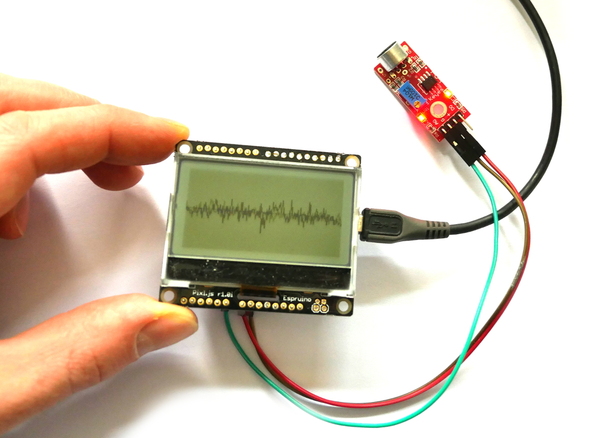Pixl.js Oscilloscope

This example displays a simple oscilloscope on Pixl.js's LCD display.
Simply attach an amplified Microphone
or some other varying input to pin A0 on a Pixl.js board,
connect, and upload the code.
There is no triggering in this example, but it could be added relatively easily.
Some microphone boards have a potentiometer to adjust DC offset. If so, you can adjust the potentiometer with this software running until the waveform is in the middle of the screen to ensure that you get as large a range of microphone input as possible.
Note: Realistically 1kHz is about the highest you can read and plot data in real-time with Puck.js. You can however sample at higher rates, just not continuously.
Source Code
var w = new Waveform(128,{doubleBuffer:true});
var SAMPLERATE = 1000; /* Hz */
w.on("buffer", function(buf) {
g.clear();
g.moveTo(0,32);
buf.forEach((y,x)=>g.lineTo(x,y/4));
g.flip();
});
w.startInput(A0,SAMPLERATE,{repeat:true});
This page is auto-generated from GitHub. If you see any mistakes or have suggestions, please let us know.